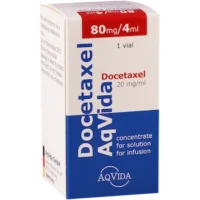Description
Fluorouracil (Fluorouracil) Solution for Injections 50 mg/ml. 10 ml. (500 mg.) №1
Ingredients:
Fluorouracil (Fluorouracil) solution for injections contains 50 mg/ml of the active ingredient in a 10 ml vial, totaling 500 mg per vial.
Dosage:
The recommended dosage of Fluorouracil solution for injections is determined by a healthcare provider based on the specific condition being treated. It is administered intravenously by a healthcare professional.
Indications:
Fluorouracil is indicated for the treatment of various types of cancer, including colorectal, breast, and gastrointestinal cancers. It works by interfering with the growth of cancer cells.
Contraindications:
Do not use Fluorouracil if you are allergic to fluorouracil or any of the ingredients in the solution. It is important to inform your healthcare provider about any medical conditions or medications you are taking before starting treatment.
Directions:
Follow the instructions provided by your healthcare provider for the correct administration of Fluorouracil solution for injections. It is typically given in a hospital or clinic setting under medical supervision.
Scientific Evidence:
Fluorouracil has been extensively studied in clinical trials and has shown efficacy in the treatment of various cancers. Research published in the Journal of Clinical Oncology has demonstrated the effectiveness of fluorouracil-based regimens in improving survival rates in patients with advanced colorectal cancer.
Additional Information:
Fluorouracil is a widely used chemotherapy medication that has been included in the World Health Organization’s List of Essential Medicines. It is considered a key component in the treatment of several types of cancer due to its proven efficacy and manageable side effect profile.
Pharmacological Effects: Fluorouracil is a pyrimidine analog that inhibits thymidylate synthase, an enzyme essential for DNA synthesis. By disrupting this process, fluorouracil interferes with the growth and spread of cancer cells, ultimately leading to their destruction.
Clinical Trials: Clinical trials have shown that fluorouracil, either alone or in combination with other chemotherapy agents, can significantly improve outcomes in patients with various types of cancer. Studies have highlighted its role in adjuvant therapy for colorectal cancer and its effectiveness in reducing the risk of cancer recurrence.





